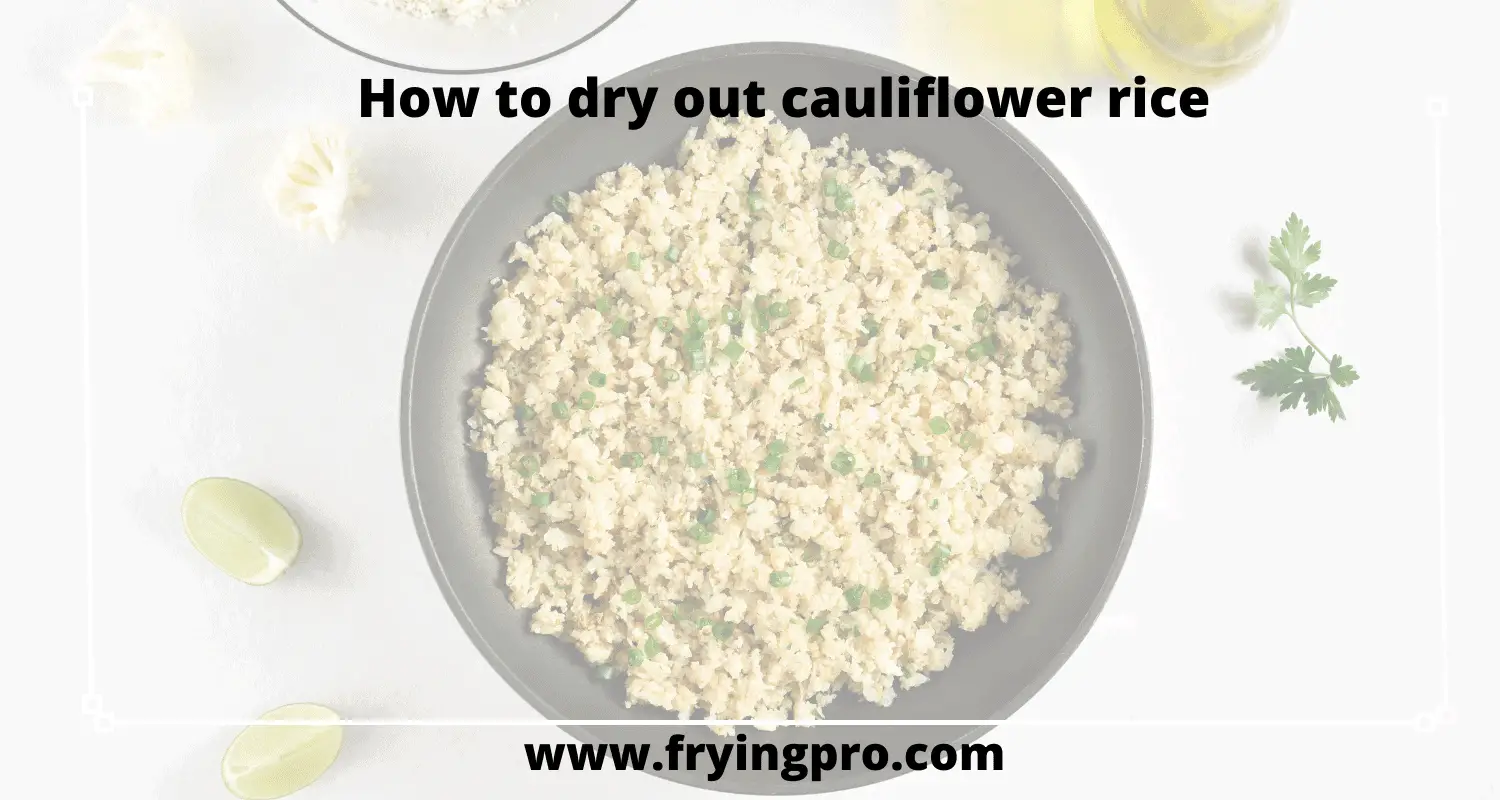Who doesn’t like eating Cauliflower rice to maintain a low calorie diet? But drying cauliflower is a challenge that discourages many to eat this wonderful vegetable.
How to dry out cauliflower rice? This is the question that bothers many because drying cauliflower rice can sometimes be tricky.
In this article, you will learn a quick, easy and time tested method of drying cauliflower rice in large quantities.
Table of Contents
- How to dry out cauliflower rice?
- What are the different methods or tools that can be used to dry out cauliflower rice?
- A step-by-step guide to drying out cauliflower rice in a dehydrator
- What is the best method or tool to dry our cauliflower rice in bulk quantity?
- Why proper drying out cauliflower rice is important?
- How long can cauliflower be stored after drying?
- What are goitrogens in cauliflower rice?
- Conclusion
How to dry out cauliflower rice?
Boil the cauliflower rice for 2-3 minutes to reduce goitrogens in it. Spread the boiled rice on a paper towel, and let it dry for a while. Place a silicone mat on the mesh screen of the dehydrator and spread the rice on it. Set the temperature of the dehydrator to 125◦F. Let rice dehydrate for 4 – 8 hours.
The key to making cauliflower taste delicious is cooking it right and using the right ingredients. The most important thing is not to overcook your cauliflower, which will make it turn into a mushy mess.
Keep in mind that dryness is also determined by how you cook your rice, so don’t over-steam your cauliflower to ensure that it remains crunchy.
What are the different methods or tools that can be used to dry out cauliflower rice?
There are a few different methods or tools that can be used to dry out your riced cauliflower.
- Salad spinner: One of the most popular methods is using a salad spinner. This method allows you to dry your riced cauliflower quickly and efficiently by using centrifugal force.
However, this method doesn’t work well with large leaves, which means that you may need to do some pre-rinsing in order to make sure that you get all of the dirt out off of your leaves before you start spinning them. - Hand towel: Another option is using a hand towel to dry your dried-out cauliflower riced leaves.
If you don’t have a salad spinner, vegetables like broccoli and kale also work well when drying out the leaves from the riced cauliflower, as these vegetables have smaller leaves than cauliflower. - Oven: Another tool or method for drying out your riced cauliflower is an oven on its lowest temperature setting.
You can place your riced cauliflower on a baking sheet and bake it on its lowest temperature setting for about 20 minutes or so until it turns into little crispy bits.
Make sure not to overdo it during the baking time, as too long will result in mushiness instead of crunchiness!
If you want something simpler and more affordable, try using a dehydrator instead! They are quick, simple, and easy to use!
A step-by-step guide to drying out cauliflower rice in a dehydrator
- Step 1: Set your oven to a low temperature. If you don’t have an oven with specific settings, you can simply use the lowest setting possible.
- Step 2: Rinse your riced cauliflower under cool running water until the water runs clean. This step helps remove any dirt or grit from the riced caulcyclous so that it becomes more digestible for your body. You can also use a vegetable brush or a cheesecloth to help clean the leaves from residual dirt or grit.
- Step 3: Line a baking sheet with parchment paper and spread out all of your riced cauliflower on top of it in one layer so that none of them are touching each other.
- Step 4: Bake at 325 degrees F for 30-45 minutes, depending on how long you want your rice to be crispy (the shorter cooking time will produce crunchier pieces).
- Step 5: Allow your rice to cool slightly, then transfer it into a mixing bowl and mix in about 1/4 cup olive oil, 1 tablespoon chopped garlic, 1 teaspoon sea salt, and 3 tablespoons nutritional yeast flakes (or other vegan cheese) and stir well until the mixture is evenly combined.
- Step 6: Spread the mixture on another lined baking sheet in one layer again and bake at 375 degrees F for 10 minutes until crispy. Let cool before serving.
What is the best method or tool to dry our cauliflower rice in bulk quantity?
The easiest way to dry your cauliflower rice is on a sheet tray. Line the sheet with parchment paper and place the riced cauliflower down onto it.
Make sure to let the riced cauliflower overlap, as this will help speed up the drying process.
If you don’t have one, a baking sheet can also be used in a pinch.
Bake your dried riced cauliflower in an oven on its lowest setting for about 30 minutes, or until it’s completely dry..
Why proper drying out cauliflower rice is important?
Drying out the rice is important because it helps you get a great texture and taste. Proper drying methods will ensure that the rice doesn’t become a mushy mess that is difficult to chew and swallow.
You also want to make sure that you don’t overcook your cauliflower, as this will eventually make it turn into something not worth eating.
The key to making cauliflower taste delicious is cooking it right and using the right ingredients. The most important thing is not overcooking your cauliflower, making it a mushy mess.
Keep in mind that dryness is also determined by how you cook your rice, so don’t over-steam your cauliflower to ensure it remains crunchy.
How long can cauliflower be stored after drying?
Once you’ve riced your cauliflower, you can store it in a covered container for 1-2 days before using. You can also freeze your riced cauliflower for up to 3 months.
What are goitrogens in cauliflower rice?
Goitrogens are substances that can inhibit the synthesis and utilization of thyroid hormones in the body.
This is not a concern if you’re eating cauliflower rice cooked at high temperature, as this will destroy goitrogens, but if you are cooking your cauliflower rice with other vegetables or at low heat, then it is important to remove any goitrogens from the mixture before serving. .
Conclusion
So, how to dry out cauliflower rice? A few methods or tools can be used in order to dry out cauliflower rice. It is important to dry out cauliflower rice properly, because there are goitrogens inside of the vegetable which can lead to thyroid problems. Cauliflower can be stored for up to two weeks after being dried.







